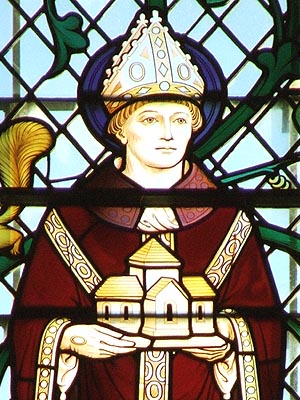St. Oswald of Worcester, Archbishop of York (original) (raw)
EBK Home
Kingdoms
Royalty
Saints
Pedigrees
Archaeology
King Arthur
Adversaries
Mail David
 St. Oswald
of Worcester,
Archbishop of York
(Died AD 992)
St. Oswald
of Worcester,
Archbishop of York
(Died AD 992)
St. Oswald was the son of noble Danish parents. St. Odo the Good, Archbishop of Canterbury, was his uncle and he was also related toOsketel, his predecessor in the see of York. He was sent by Archbishop Odo to Winchester, where the lives of the secular canons by no means satisfied him; and he accordingly transferred himself to the famous Benedictine Monastery of Fleury, where he took the vows, and was afterwards ordained. On the death of Odo, in AD 958, he returned to England and was warmly received by Archbishop Osketel of York, who had not long become the head of the Northern Province. Oswald set out with Osketel for Rome; but did not proceed beyond Fleury, where he remained until Osketel summoned him again to England to assist in the re-introduction of the Benedictine rule and the suppression of the secular canons. He joined cordially in the endeavours of Dunstan to this effect and was raised, by his influence, to the see of Worcester in AD 961. Ten years later, he became Archbishop of York; but retained Worcester in commendam until his death.
Oswald was the reformer and remodeller of many religious houses in his diocese of Worcester and was powerful enough to rearrange the great monasteries of Ely and St. Albans. In the north, he does not appear to have made, or perhaps to have been able to make, much change. He died on 29th February AD 992 and was buried at Worcester where his shrine was held in great honour until the Reformation. St. Oswald and St. Wulfstan are regarded as the patrons of the Cathedral. The most important life of St. Oswald is by an unknown monk of Ramsey - a monastery founded at his insistence by Aethelwin, Ealdorman of East Anglia, called by the chroniclers "Amicus Dei". It is the foundation on which all subsequent biographers of the archbishop have built.
Edited from Richard John King's "Handbook to the Cathedrals of England: Northern Division" (1903).
